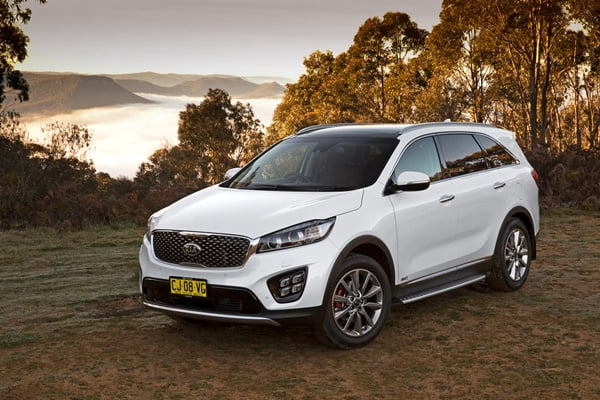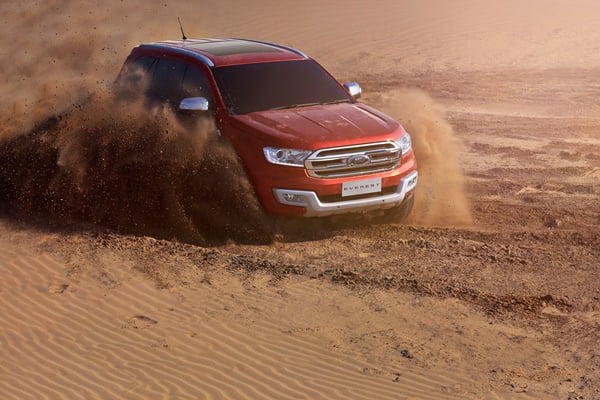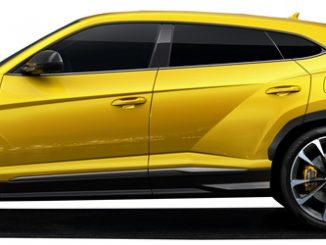Porsche Macan S Overview
Porsche may be identified as a sports car maker and the iconic 911 silhouette the symbol of its success but the powerhouse performer for the brand is the Macan.
The sister to the Cayenne – famous for infamously breaking the Porsche exclusive sports-car model line-up and the sole reason Porsche remains alive and in German hands today – is the car that fills the company coffers and turns the heads on streets from Albania to Vietnam.
It is the reason there is a 911/992 and a Taycan and a devotion to the electric vehicles that will follow.
Australians have bought almost 10,000 Macans since the mid-size five-seater was launched here in 2014, a fraction of the 350,000 in garages around the world yet important because it has always been a hot seller.
There was probably no real reason to change the formula but they did anyway. Porsche this week launched a new Macan, delicately terming it not quite a new generation and yet more than a mid-life makeover.
The significance of this 2019 model – actually launched in August last year in Europe – is its new engine, a change to suspension components, better cabin features and upgraded tech from infotainment to drivetrain electronics.
There are some features trickled down from its big sister and even from the Panamera saloon, most significantly a departure from the Audi-based V6 engine with Porsche’s own six-cylinder – a move that defies the Volkswagen Group’s trend to commonality.
The launch this week is for the Macan S with the new 2.9-litre V6 turbo-petrol. Over the next fortnight comes the upgraded 2.0-litre four-cylinder turbo-petrol variant that with its sub-$90,000 price, serves to introduce the brand to many first-time owners.
Next year will come the more powerful Turbo and V8-engined GTS.
But an odd standard exclusion on the $97,500 (plus on-road costs) Macan S is autonomous emergency braking – an item standard on the $14,000 Kia Picanto.
With the new Macan, Porsche sees the end to its short-lived dalliance with the diesel engine. There are now no vehicles powered by a diesel and wearing Porsche badges.
Porsche Macan S Exterior
One look at the Macan and you see where every other SUV manufacturer just got it all wrong. This is a beautiful machine, its body cling-wrapped to a chassis and stretched over 20-inch wheels (21s are optional), with a big greenhouse, pouting grille and the pin-pricks of LED headlights.
Save for a contrasting panel below the waist that serves as body protection, there are no fussy scallops and creases, bulges or vents. It’s just clean, smooth and elegant.
With the design, the devil is in the detail. The seemingly simple act of clothing the conventional front engined, five-seat cabin masks the need to make the car as slippery as possible to cheat the wind to lower fuel use and win bunny points with Europe’s stringent emission rules.
It has to have extremely low wind noise yet retain the SUV genre’s height and width for cabin and luggage space. Invariably, as an all-wheel drive loaded with safety and infotainment apparatus, it also has to cheat weight.
The headlights are flush finished and the bonnet is a clam-shell deign, spilling over the edges to almost touch the wheel arches. At the rear, the same warp-around design assures the boot lid of a wide opening to swallow as much cargo as possible.
There are active radiator flaps behind the whale-shark mouth grille that close to reduce air drag and open when the engine heats up.
The Macan’s 20-inch wheels on new-design five-spoke alloys – looking a lot like the simple spoked wheels of two decades ago – are the entry-level wheels, with optional 21-inch available. Tyres are different sizes front and rear and the spare is a deflated space-saver with an onboard compressor.
Unmistakable will be a new range of colours that takes some inspiration from the bright-painted models of the 1960s and 1970s. The green and brown and blue hues are what Porsche terms “bright and shouty”.
Porsche Macan S Interior
The highlight of the new model is the large central screen with bright and crystal clear TFT graphics for functions including entertainment, navigation, communication and ventilation.
The instrument panel remains similar to the outgoing model, with the classic central tachometer offset by the speedometer and a multi-function space for vehicle information and secondary navigation.
Like the exterior, the cabin layout and dashboard design screams simplicity and class. The white-on-black graphics, array of switchgear that highlights the feature list, high seating and clear vision from the driver’s seat are all Porsche hallmarks and the core reason why the Macan is so user friendly.
But there are too many switches, especially on the cascading centre console, to relate to quickly. This is a car that needs time for the driver to learn the layout and the location of the controls. Perhaps that’s part of Porsche’s driving appeal.
By contrast, the steering wheel controls are intuitive, with a roller near the driver’s right thumb for altering the right-side information readout.
There’s also predictive controls that alight when a hand nears, actually worked by light rays.
Personal storage is adequate with large door pockets for bottles, a spacious centre console with lid, and cupholders in the front and within the rear seat’s armrest.
The use of quality materials goes hand in hand with the clean layout. The seats are large, well suited to countries of large-frame citizens, with excellent support and adjustment.
Cabin room is generally good, though the long 2.8m wheelbase does not translate into liberal rear-seat room, rather being a comfortable space for two adults with some limits to legroom. A tall driver may not make life in the rear very comfortable.
The boot area is a surprise. The rounded tail hints at restrictive luggage space but the Macan soaks up cargo with ease, opening on its electric tail gate – incidentally, one of the quietest on the market – to allow 500 litres of load. Flip the split-fold rear seat and the flat floor will cope with 1500 litres.
Porsche Macan S Features/Technology
The basic dashboard remains but the highlight is the 10.9-inch centre touchscreen in with beautifully clear and crisp graphics that looks like a OLED TV kaleidoscope.
This controls of the Porsche Communication Management (PCM – get used to Germany’s love of abbreviations) system contain all the usual suspects from entertainment to sat-nav, ventilation and voice control.
The voice control gets all the attention because it allows easy operation of the infotainment system and bypasses things like the need to type in an address for the sat-nav. Now you simply state the address.
The full HD screen is up from 7.2-inches in the outgoing Macan and now gets full connectivity and the ability to be personalised. It also offers functions including security and connection to emergency services.
The Porsche Connect app and Porsche Car Connect app – which talk seamlessly with Apple CarPlay and Android Auto – are standard and designed for owners who want to communicate with the car via their smartphone.
The standard audio is a 150-Watt, 10-speaker unit with digital radio. With the Porsche Connect system there is also a wi-fi hotspot.
Porsche Macan S Engine and Drivetrain
New for 2019 is Porsche’s own 2.9-litre – though the company calls it a 3.0-litre – V6 that replaces the Audi-origin 3.0-litre V6.
There are significant differences between the two engines. Primarily, the new 2.9 is a single turbo with a twin-scroll unit mounted in the engine’s vee – “hot in, cold out” is the pseudo-technical term – with the exhaust manifolds integrated with the heads and dumping waste on the “cold” side of the engine.
The engine is lighter than before and its design allows it to sit lower in the body, helping handling even further.
Audi’s engine was a bi-turbo design. The latest twin-scroll design means exhaust gases are delivered to the turbine in two streams so there is always charged air flowing through the unit to minimise lag.
Porsche says all this means 260kW at 5400-6400rpm and torque of 480Nm from 1360-4800rpm. This makes it 10kW more powerful than the Audi engine and with the same torque, with the result of an almost academic 0.1 second improvement in the 100km/h sprint that is now covered in 5.1 seconds (when fitted with the Sport Chrono pack).
The other difference is that the new engine has a particulate filter, a follow on from the diesel method of further reducing emissions. The engine meets Euro 6 Stage 4, again academic as Australia is still around Euro 5.
The transmission remains the seven-speed dual-clutch system with all-wheel drive and variable torque delivery to front and rear axles, complemented by electronic torque vectoring on each wheel using the individual wheel’s brakes.
Macan’s standard equipment includes the basic off-road aids – hill descent and an off-road button that changes engine, brake and transmission characteristics – with a lockable electronically-operated multi-plate differential.
Its suspension is basically the same as before, yet many of the steel components are now made of aluminium. The suspension is steel sprung but electronic air is an option.
In other tech, buyers can also opt for the Sport Chrono Package – which has been available for years on other models – that includes a Sport Response Button for extra performance in instances such as overtaking.
There is also an Offroad Precision app that buyers who take their car off the road can use to document and record their adventure.
Porsche Macan S Driving Experience
There’s a promise to the driving prowess of this vehicle and its written on the badge on the bonnet. Porsche. You don’t buy these to take the kids to school – well, before the Cayenne you didn’t.
The company builds vehicles to perform. Handling, engine performance, the gambit of driving dynamics, braking, steering and so on. Now there’s suspension comfort, seating space, luggage volume and features.
This is the promise before the Macan drive. It differs from the passenger-car Porsches with its height, solid doors and sense of strength that is generally at the opposite end of the scale compared with the almost delicate 911 and 718.
The seating position is perfect in an SUV sense, boasting excellent all-round visibility through glass though there’s hidden bits with the tapering nose and curvaceous tail.
It may be smaller than the Cayenne but it’s not by much (in fact, 222mm in length and 72mm lower) and it does feel impressively big from within.
The engine is unusually muted for a sports SUV – though buyers who don’t like the muffled purr through the rev range can opt for a sports exhaust – which adds to its tame demeanour.
Even driven gently, it’s a very composed machine with compliant suspension and easy manners. Things change when the accelerator pedal is booted and, further, when the Sport Response button is pressed on the steering wheel.
It’s a quick wagon, uplifting its skirts quickly and dashing without the turbo lag of some peers to confirm the improved response of the new engine and the sophisticated turbocharger.
The dual-clutch gearbox really impresses with its rapid upshifts, peeling through the six gears before relaxing in seventh.
The steering is equally as captivating. It’s sharp and positive yet there’s some softness that makes it easy to relax over long distances.
Sure, critics claim electric-assisted steering – which is now common to all Porsches – is less sensitive than the old hydraulic system and, in turn, that was regarded as being much softer than the non-power units of the early cars.
So it’s quick, responsive and quiet. All good, huh? Not quite. I had expected more kick in this S version. More noise, more punch. But it’s a predictable and linear engine and perhaps that’s what Macan buyers want. Maybe this is the norm while the forthcoming (2020) GTS will be the one to pick for all the noise and neck lash.
Two versions were tested – one with the 20-inch standard issue tyres and the other with the optional 21-inch. There’s not much in the pick, with some slight lift in noise over coarse bitumen in the 21s.
Porsche Macan S Safety
First the elephant in the room – there’s no autonomous emergency braking (AEB) unless you tick (and pay for) the optional pack that includes active cruise control. Further, AEB won’t be standard on the next Turbo and GTS Macan variants.
Porsche Australia said only 20 per cent of Macan buyers in Australia have ticked the AEB box. The car is also not crash tested so though the lack of AEB will make it a four-star car, it seems buyers don’t care.
That aside, new tech includes optional Traffic Jam Assist that uses adaptive cruise control (also an option) to drive the car up to 65km/h, keeping it in the road lane and tracing the car ahead.
Standard safety includes the rear camera plus a 360-degree surround function, lane departure warning and front and rear park sensors.
The spare tyre is a collapsed space-saver with an 80km/h limit, together with its compressor that your wife will just love to assemble on a wet, cold winter’s night at the side of the road. Roadside assist? Yes.
Porsche Macan S Fit for Purpose
It wins because (a) it’s a Porsche, (b) it’s an SUV and (c) it’s drop-dead gorgeous. It is the brand’s top seller and they are the core of the reasons why.
As a wagon it seats five (better with four) adults, has heaps of luggage space, drives with uncommon assurance, has great performance and – if I didn’t mention it before – looks like a super model.
So, yes, this does the job. It’s expensive but it has an audience prepared to cough up. It can go off the bitumen rather well, too.
Porsche Macan S Summary
There is an addictive sense that this car knows what it’s doing. It is so confident on the road that it makes poor drivers look talented.
Because of this, it makes living in the car quite relaxed. It may lack a few features but it has a goodly mix of the basics. The audio is wonderful, the seats supportive and as comfortable as your armchair, and one glance around the cabin shows the Macan reeks quality.
Yeah, you paid a lot for it but it was worth it. And come resale, it’ll reward you again.
Also look at:
The Good:
- Style and design
- Performance
- Ride quality
The Not so Good:
- Price
- No AEB
- Minimal standard features
Porsche Macan S Details
- Price from $97,500 MLP*
- Engine 2.9L V6 turbo-petrol
- Drivetrain 7-speed DCT, AWD
- Power 260kW @ 5400-6400rpm
- Torque 480Nm @ 1360-4800rpm
- Safety 8-airbags, lane departure warning
- CO2 204g CO2/km
- Economy 8.9 L/100km
- Servicing Menu servicing with pre-paid option packages
- 0-100KMH 5.3 seconds (5.1sec with Chrono option)
- Top Speed 254kmh
- Warranty 3 Yrs. / Unlimited km Roadside Assist
*MLP – Manufacturers List Price includes GST and LCT but excluding statutory charges, dealer costs and dealer delivery. See your dealer for RDAP. Does not include price of any options.





















1 Trackback / Pingback
Comments are closed.